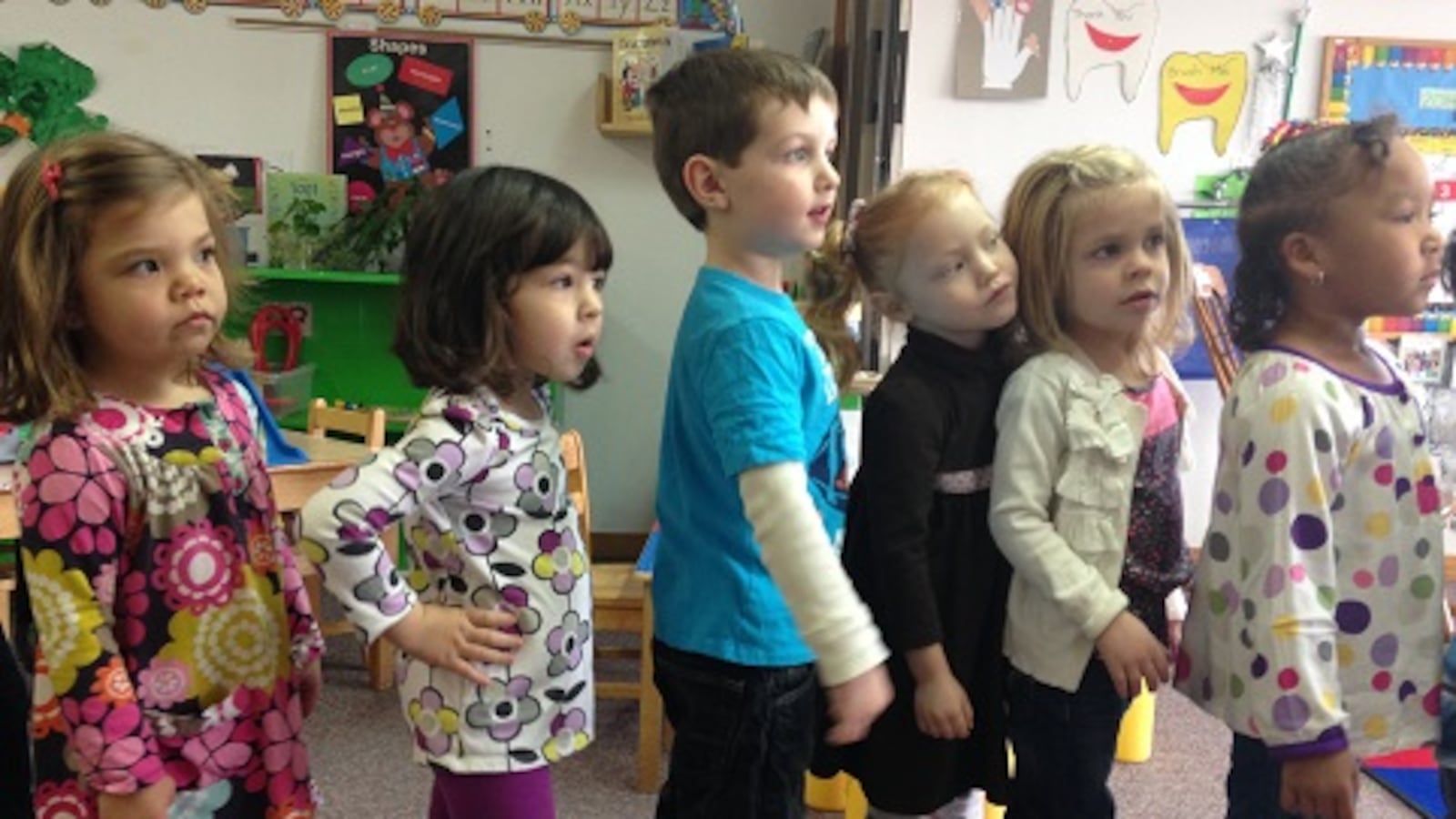The three- and four-year-olds at Promise Christian Preschool in Lafayette were busy playing at the water table, painting letters, and pretend grocery shopping on a recent Tuesday morning.
Terri Stowell was just as busy, madly writing notes on a sheaf of papers as she examined toys and books, monitored hand-washing routines and observed teachers as they talked and played with students. Stowell, lead quality rating specialist for the non-profit Qualistar, spent more than three hours at the preschool collecting much of the information she would need to award the center a rating of one to four stars.
It was the first time the center had sought a Qualistar rating, which is a well-respected but voluntary program that costs providers about $1,000 per classroom. Director Leana Zlaten, who secured grant money to pay the fee, was hoping for at least two stars, and maybe three. In May, she will get her answer.
And then in July, everything will change.
That’s when the state is expected to launch a free mandatory rating program to replace Qualistar’s 14-year-old system. While Zlaten’s stars should transfer seamlessly into the new five-level rating system, the vast majority of the state’s preschool and child care providers will find themselves in a place they’ve never been before.
That is, with a public rating indicating their facility’s quality.
What’s the point?
Until now, child care providers, whether “centers” or “family child care homes,” were required to be licensed by the state but nothing else. Unless they pursued a Qualistar rating on their own or parents did a lot of legwork, there wasn’t much to distinguish one from another.
On a national level, “Quality Rating Improvement Systems,” often called QRIS, have been the trend over the last decade and experts herald them for improving the quality of early childhood programs and better informing parents how local child care facilities stack up. In Colorado, there is both excitement and confusion about the new system, which has been in the works since 2010.
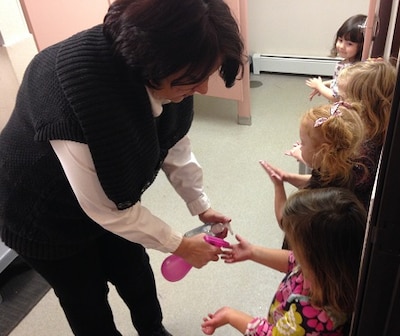
“We are all in favor of continuing to march toward quality,” said Bev Thurber, executive director of the Early Childhood Council of Larimer County.
Still, like other early childhood advocates interviewed, she said the new system represents a huge undertaking with an ambitious timeline.
“People are definitely concerned because there’s a lot of unknowns,” she said. “It’s still a system in flux.”
With less than three months to go before the launch, many questions remain. For example, it’s unclear whether the system’s name will change from its working title, “Next Generation Quality Rating Improvement System,” or whether child care providers will earn stars, numbers or something else.
Another unanswered question is which contractor—Qualistar or Simplydigi.com Inc. —the state will choose for a $2.5 million contract to conduct some of the new ratings. With these and several other decisions pending, there’s also a possibility the launch date could be pushed back.
While state officials at the Colorado Department of Human Services, which has authority over the new system, agree that there still many unknowns, they are taking an optimistic tone.
“I am feeling so excited at the moment,” said Karen Enboden, child care QRIS manager for CDHS. “I think this is absolutely the right step for Colorado.”
Racing to the top
The Next Generation system, which is being funded with part of a $44 million federal Race to the Top grant, will roll out in two phases. Starting in July, center-based programs will be the first group of providers to earn ratings. These programs, which include non-profit and for-profit preschools and child care centers as well as early childhood classrooms run by school districts, represent 86 percent of licensed capacity for children 0-5.
Family child care homes, defined as home-based sites serving two or more unrelated children at the same time, will have the option to participate in the new system this year, but it won’t become mandatory until July 2015.
While many experts laud Qualistar for being one of the pioneers of early childhood quality improvement, they also note that the organization never was able to capture a critical mass of the child care sector because its ratings are costly. Currently, less than 10 percent of licensed providers in Colorado have Qualistar ratings, according to Gladys Wilson, the organization’s executive director.
“They never reached that tipping point,” said Thurber.
Many providers with Qualistar ratings receive funding from foundations or other funders to cover the fees. Not many providers raise the money themselves.
It was clear from Stowell’s half-day visit, which she planned to follow with a return visit to meet with Zlaten the next day, why ratings aren’t cheap. They represent a complicated and time-consuming process, well beyond the more basic considerations of licensing. They weigh student-teacher ratios, teacher credentials, parent surveys and even questions like how the walls are decorated, whether toys reflect age, race and gender diversity and whether teachers use language to help children develop reasoning skills.
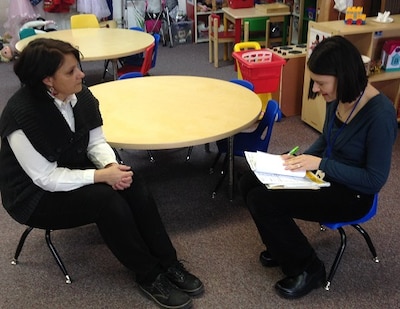
Enboden said ratings will be free under the new system, at least until the federal grant expires at the end of December 2016. In addition $7-8 million of the grant funds will be available to help providers improve their facilities and practices so they can obtain better ratings.
Under the current Qualistar system and perhaps under the new system as well, the motivation to improve often comes before the rating as well as after. For example, Zlaten and her staff made several changes before Stowell’s visit, which occurred unannounced during a one-month window. They moved furniture around the large classroom, opening up a sunny area near the windows for free play and circle time.
At the same time, there were some things they couldn’t easily improve. They knew the playround, which Stowell said is a problem area for many facilities, would cost them some points. While it appeared perfectly acceptable to a casual observer, Stowell found several issues as she measured equipment spacing and looked for hazards like easy-to-open gates, protruding bolts and wide gaps between rails.
“The inside, that’s what we focused on,” said lead teacher Cristina Maginot.
Overall, the facility, which provides scholarships to about a quarter of its students, had much to recommend it — small class sizes, conscientious teachers and a lots of engaging activities.
Enboden said the goal is for 20 percent of the state’s licensed child care facilities to earn a rating of three, four or five by the end of 2016. A state-run parent portal where families can look up Next Generation ratings could be up by January 2015.
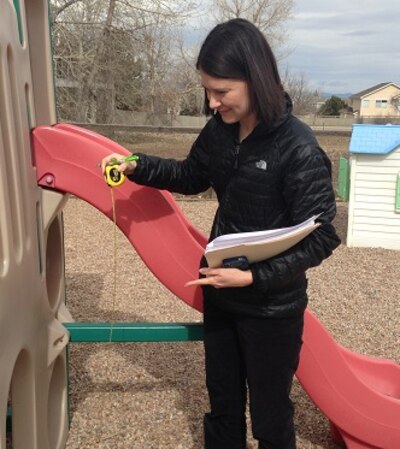
“My hope is that parents will have more information so they can make informed decisions,” said Wilson.
Like many early childhood advocates, she said most parents decide where to send their children based on cost, convenience and word of mouth recommendations, not necessarily provider quality.
The City and County of Denver, which has hundreds of Qualistar-rated facilities, may be somewhat of an exception. That’s because the Denver Preschool Program, which provides preschool subsidies to families of four-year-olds, has put a premium on preschool quality and pays for Qualistar ratings as well as improvement measures.
“Denver’s far ahead of the rest of the state,” said Cheryl Caldwell, director of early education for Denver Public Schools.
Embedded in licensing
One of the biggest differences between Qualistar and the Next Generation QRIS is that the rating system will now be embedded in licensing. In other words, all center-based and family child carehome providers with a valid license, which requires basic health and safety measures, will automatically get a rating of one.
There will be no requirement to pursue a two, three, four or five, but some observers believe providers won’t want to settle for the lowest score once they see their competition attaining higher levels of quality.
“Peer pressure,” said Thurber.
Providers will be able to advance to a level two if their staff members complete state-approved online trainings and enroll in the state’s professional development information system. In addition, providers will have to complete a self-assessment of their program and create an improvement plan. The Department of Human Services will oversee awards of ones and twos.
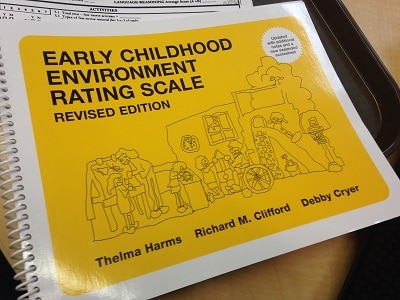
To earn a level three, four or five, providers will go through a process similar to the current Qualistar process, which includes a site visit like the one Stowell recently conducted. Depending on the outcome of the contract award, it’s possible that Qualistar’s ten rating specialists will continue to rate programs seeking one of the highest three ratings.
One differences between the Qualistar system and the Next Generation system will be the scoring methodology for the three higher ratings. In addition, while Qualistar raters look at every classroom in a facility, the new system will look at 50 percent of classrooms. Finally, Qualistar ratings typically last for two years while Next Generation ratings will extend for three.
Grandfather me in
While some center directors are no doubt nervous about their new obligations under the Next Generation system, some can rest easy during the first year or two. That’s because providers with existing Qualistar ratings will keep their existing numerical rating under the new system. In addition, providers that are accredited by yet-to-be-determined national bodies, as well as Head Start sites that have undergone federal reviews, will also transition into the new system with scores of either three or four depending on whether they meet certain criteria.
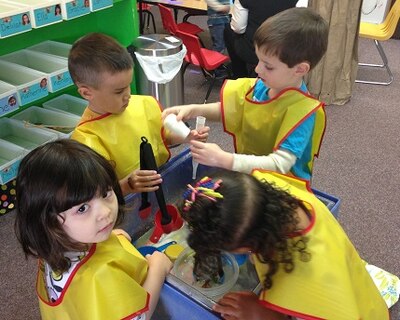
The grandfather provision, officially called “Alternative Pathways” in the new system, is part of the reason some providers are choosing to get Qualistar-rated this spring. Not only will they avoid the uncertainty of a new system in its roll-out phase, they have the opportunity to come in with high rating from day one.
Thurber said a number of providers in Larimer County have worked to get Qualistar ratings this year for that very reason. In Zlaten’s case, it helped that the Qualistar system was a known quantity.
“We know what Qualistar is like. We don’t know what the state’s [rating system] is like, so we thought, ‘Let’s do Qualistar,’” she said.

